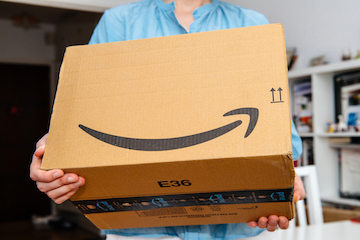Brands on the Amazon marketplace seem to believe that no one can sell their products. That isn’t true. Surprisingly, even Amazon itself could sell a brand’s products without the brand’s consent.
Amazon does this in two ways, in my experience: via “Warehouse Deals” and first-party selling. The former is a small issue, typically. But the latter can cause a brand to lose control of its listings.
Placement in the coveted “buy box” largely determines the success of a seller’s product. Sellers using Fulfillment by Amazon are often favored. Other factors include seller feedback scores, shipping performance, and price. Importantly, Amazon will compete against a brand for the buy box when it sells the brand’s products.
Surprisingly, even Amazon itself could sell a brand’s product without the brand’s consent.
Damaged or Lost Goods
Amazon’s “Warehouse Deals” sells unsalable, returned FBA products. It is a common method for Amazon to sell a brand’s goods. “Unsalable” doesn’t mean that the product is broken or unusable. Many times, it means only that the packaging is damaged. Similarly, Amazon’s fulfillment centers will occasionally lose or misplace an item.
When inventory is damaged or lost at a fulfillment center, Amazon will reimburse the seller and then sell it as either new or like new. For damaged goods, the seller name reads “Sold by Amazon Warehouse Deals.” Items that were once lost read “Sold and Shipped by Amazon.” Rarely is FBA inventory damaged or lost, however. Thus these quantities are low.
However, when it does occur and Amazon resells the item, it will try to win the buy box with a low price. Allowing Amazon to win the buy box in the short-term will drive sales and, hence, help remove the listing. Thus it’s best not to compete with Amazon in that scenario.
Amazon First-party Sales
The most worrisome way in which Amazon could sell a brand’s products is buying the inventory from an authorized vendor and reselling it. There is no easy fix for this issue. Identifying Amazon’s source can be a challenge.
One of the primary sources can be leakage in a brand’s distribution network. It is important for brands to have an agreement with all resellers that identifies approved sales channels and minimum selling prices. Such agreements can prevent selling on Amazon. In my experience, it is nearly impossible to identify violators apart from changes in quantities and units ordered.
Another source of inventory could be a third-party manufacturer. Absent proper agreements, the manufacturer could sell your brand’s product directly to Amazon. Illicit selling is more common with offshore manufacturers.
The final source of inventory to Amazon could be a counterfeiter, a company making your product and selling it to Amazon. This rarely occurs, but it remains a possibility.
Without identifying the source of Amazon’s first-party inventory, it is nearly impossible to remove it from the listings and the buy box. The key for brands, again, is to have the right agreements in place. Otherwise, a brand could be in a long battle to win back the buy box — from Amazon.







